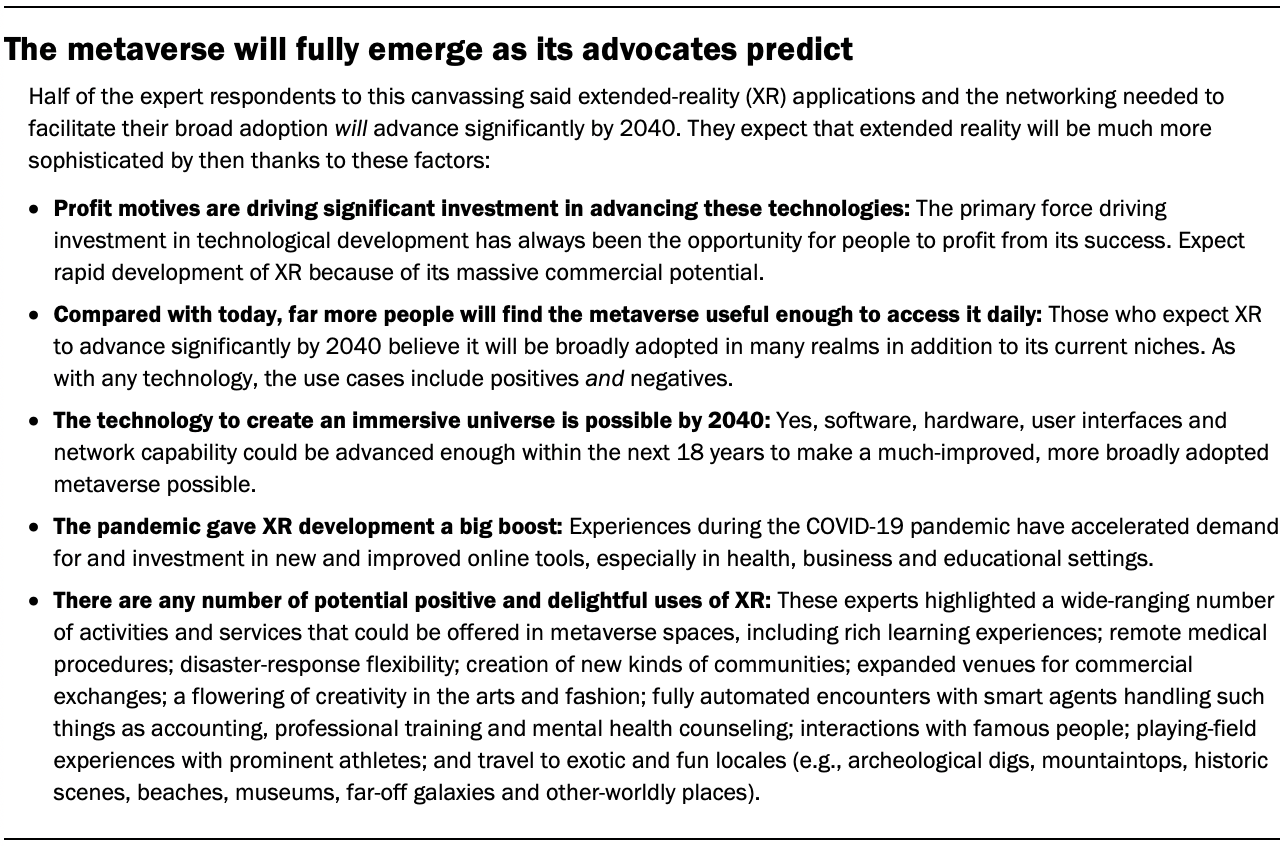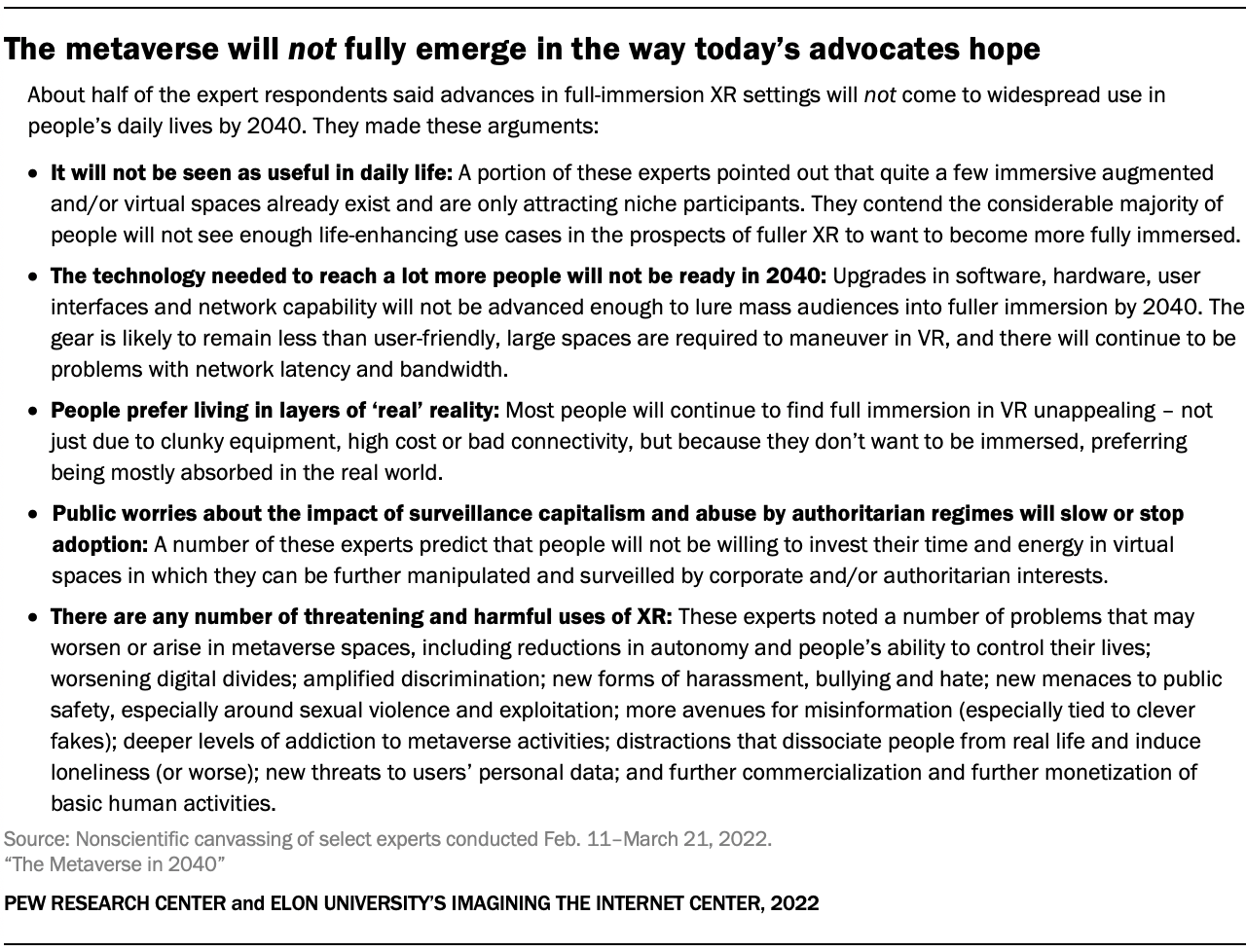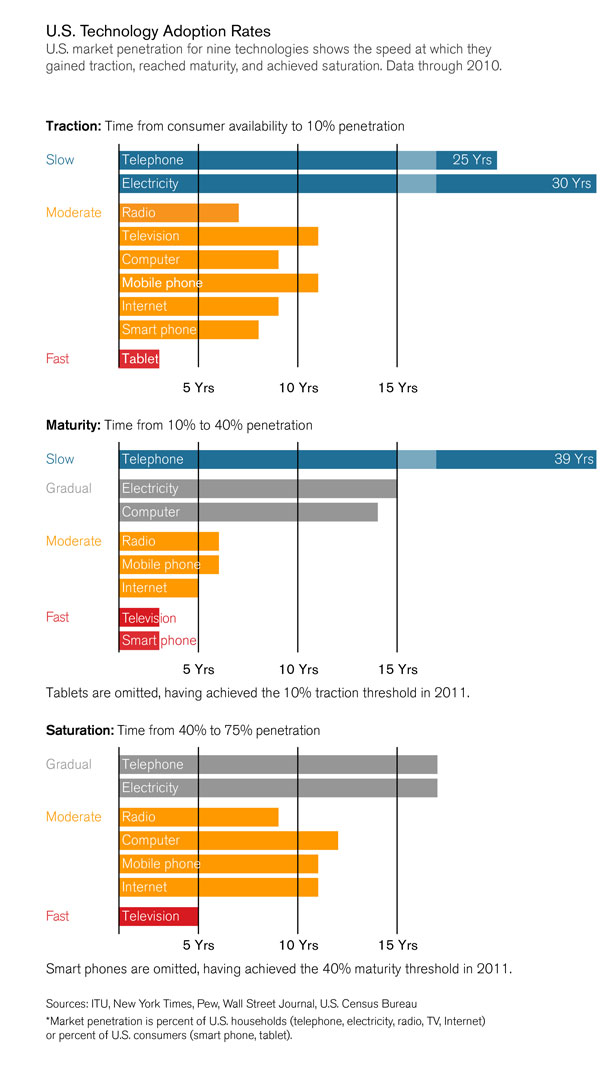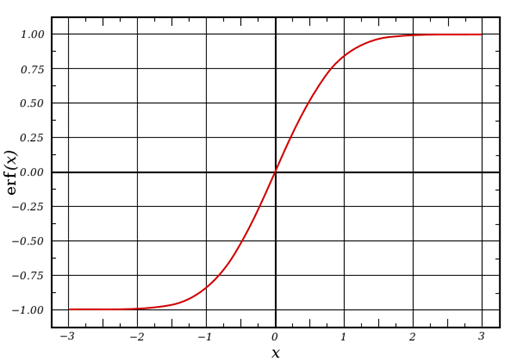Experts surveyed by Pew Research believe that augmented and mixed-reality applications will dominate full virtual reality environments in 2040. But half of the experts also believe the “metaverse” will not be common in the lives of most consumers by that point.



source: Pew Research
This will be unwelcome news for many metaverse proponents. But it is historically realistic.
Major technology transitions typically take much longer than proponents expect. One common facet of new technology adoption is that change often comes with a specific pattern: a sigmoid curve such as the Gompertz model or Bass model.
S curves explain overall market development, customer adoption, product usage by individual customers, sales productivity, developer productivity and sometimes investor interest. It often is used to describe adoption rates of new services and technologies, including the notion of non-linear change rates and inflection points in the adoption of consumer products and technologies.
In mathematics, the S curve is a sigmoid function. It is the basis for the Gompertz function which can be used to predict new technology adoption and is related to the Bass Model.
Such curves suggest a longish period of low adoption, followed by an inflection point leading to rapid adoption.
That leads supporters to overestimate early adoption and vastly underestimate later adoption. Mobile phone adoption, and smart phone adoption, illustrate the process. You might think adoption is a linear process. In fact, it tends to be non-linear.
Also, the more fundamental the change, the longer to reach mass adoption. Highly-useful “point technologies” such as telephones, electricity, mobile phones, smart phones, the internet and so forth can easily take a decade to reach 10-percent adoption. Adoption by 40 percent of people can take another decade to 15 years. And adoption by more than 40 percent of people can take another decade to 15 years.

source: MIT Technology Review
That suggests a 30-year adoption cycle for a specific innovation that has high value to be used by 40 percent to 70 percent of people. Something such as metaverse, which is far more complicated, could easily take 30 years to reach 40 percent of people in ordinary use.
That might mean at least a decade before metaverse apps are in common use by 10 percent of people. Even then, use cases are likely to be dominated by gaming, business communications and video entertainment.

source: Robert Patterson
The sigmoid function arguably is among the most-important mathematical expressions one ever encounters in the telecom, application and device businesses. It applies to business strategy overall, new product development, strategy for legacy businesses, customer adoption rates, marketing messages and capital deployment, for example.
The sigmoid function applies to startups as well as incumbents; software and hardware; products and services; new and legacy lines of business.

source: Innospective
The concept has been applied to technology adoption in the notion of crossing the chasm of value any technology represents for different users. Mainstream users have different values than early adopters, so value propositions must be adjusted as any new technology product exhausts the market of early adopters. Early adopters can tolerate bugs, workarounds or incomplete on-boarding and support experiences. They tend to be price insensitive.
It always takes longer than one expects for a major new innovation to become ubiquitous. Metaverse, being a complicated development, might take longer than any point innovation.


